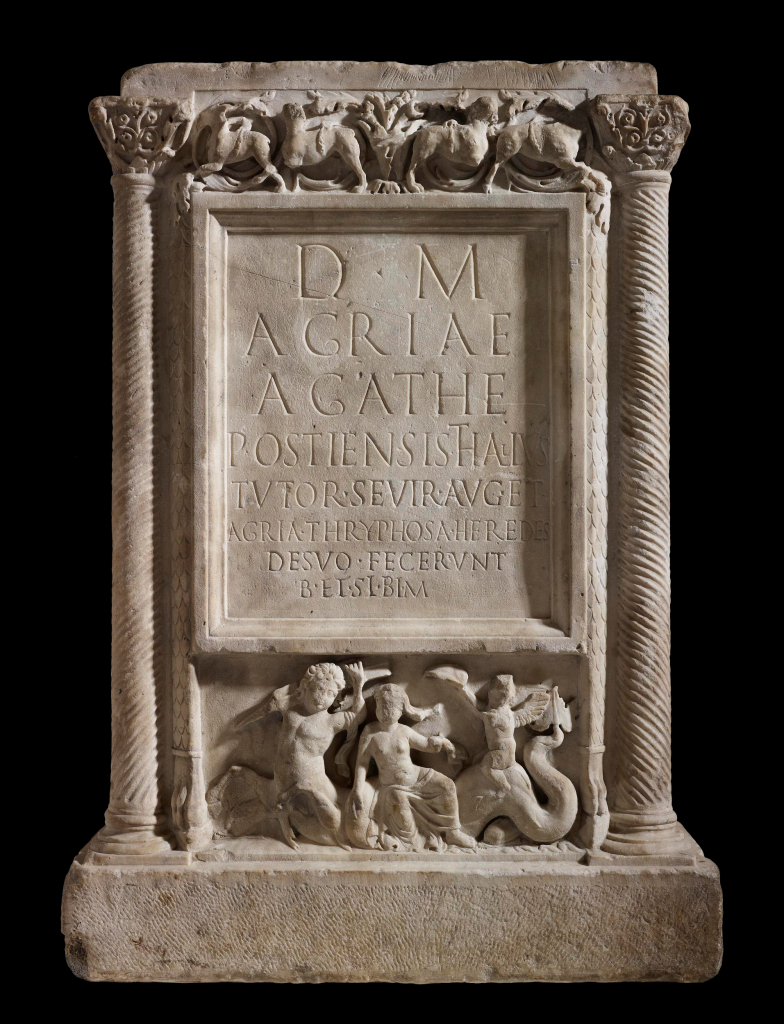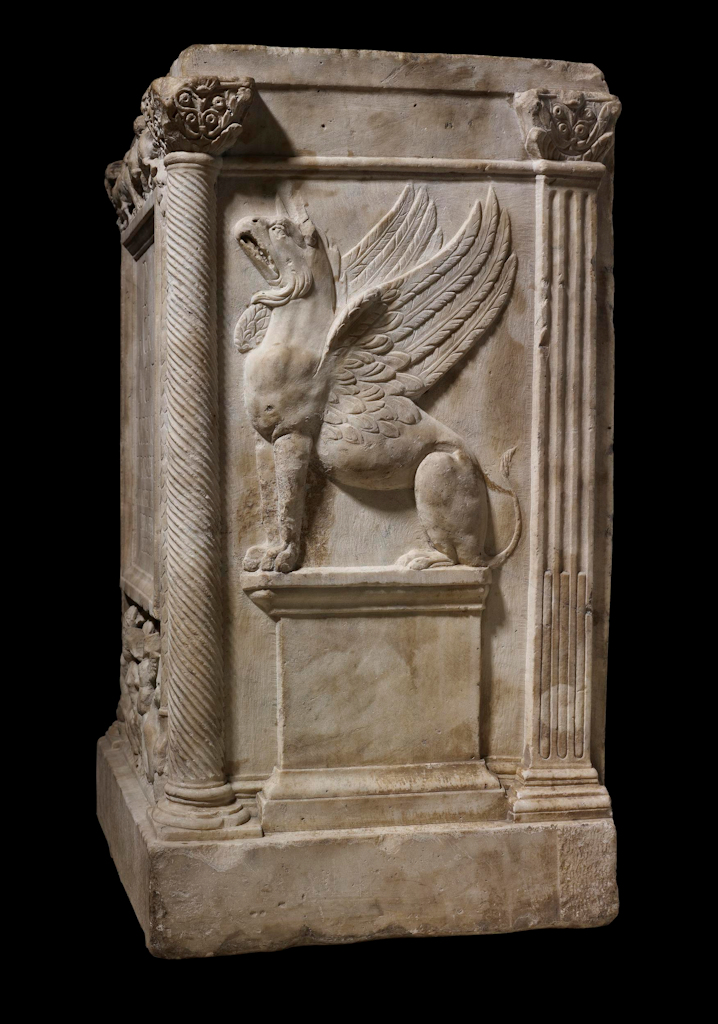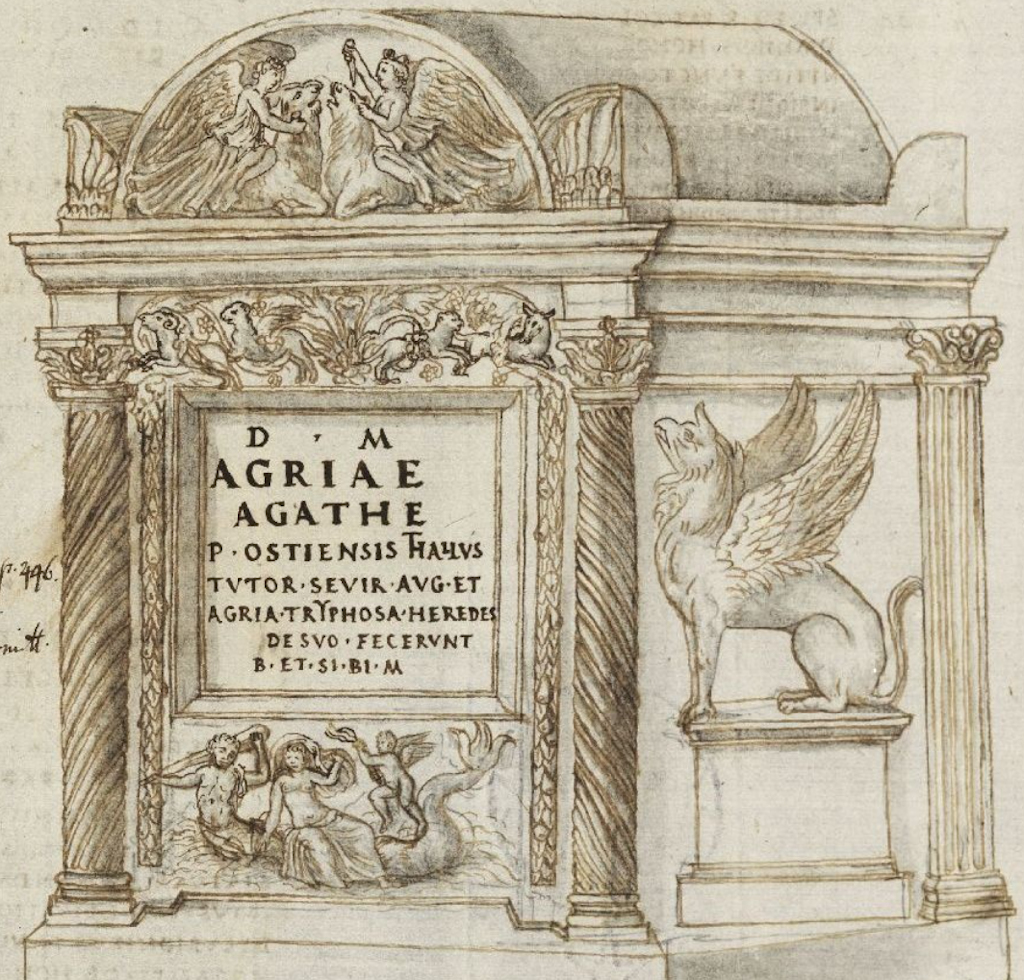Urn of Agria Agathe
Thought to be from Ostia, because the inscription mentions Publius Ostiensis Thallus, sevir Augustalis, a freedman of the city of Ostia. The cippus was known in Rome from the sixteenth century. Acquired for the Townley collection from Gavin Hamilton in 1776. Bought in 1805.
Date: early second century AD. W. 0.70, h. 0.99.
The front is dominated by an inscription:
|
D(is) M(anibus) AGRIAE AGATHE P(ublius) OSTIENSIS THALLVS TVTOR SEVIR AUG(ustalis) ET AGRIA TRYPHOSA HEREDES DE SVO FECERVNT B(ene) ET SIBI M(erenti) |
To the spirits of the dead. For Agria Agathe Publius Ostiensis Thallus, her guardian, sevir Augustalis, and Agria Thryphosa, her heirs, made this at their own expense, and for themselves, well deserving it. |
The inscription is flanked by twisted columns. Below the inscription are a Triton, a Nereid and a winged putto on a dolphin. Above the inscription are four running animals among foliage. On the sides are griffins sitting upon pedestals. Old drawings show a lid with two winged victories sacrificing bulls.



Inv. nr. 1805,0703.178. CIL XIV, 290. EDR161671. Photos: British Museum. BM info. Drawing: Census database. Census database.